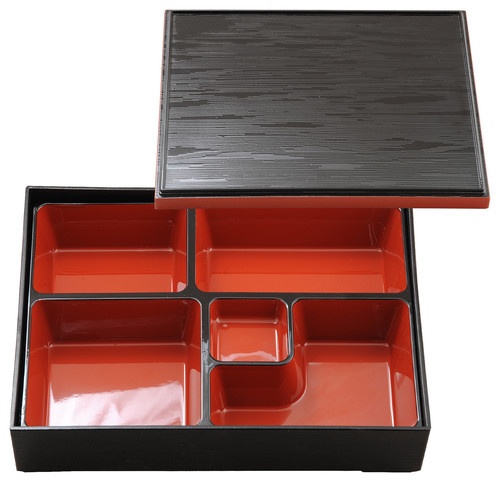Foundations of Good Design
Good Design is Like a Bento Box: Thoughtful, Balanced, and User-Centric.
A Lesson from a Lunchbox

Imagine you’re about to enjoy a meal. You open a neatly packed lunchbox. Inside, you find various sections containing different types of food. The rice is perfectly shaped, and the vegetables are vibrant. The proteins are thoughtfully arranged, with fish and chicken, depending on your preference. It’s just the way you like it. The dessert and the greens are separated, balancing a perfect meal. Everything is segregated into compartments, which keeps the flavors distinct and the presentation appealing. This isn’t just a meal; it’s an experience that delights the senses and satisfies your hunger efficiently. It keeps you healthy by providing a nutrition-rich diet.
What you’re looking at is a bento box, a traditional Japanese lunchbox. The bento box is a perfect example of a good design rooted in understanding user needs. It’s not just about the visual appeal; it’s about meeting needs effectively. The compartments keep foods separate, preserving flavors and textures. There is no unpleasant mix of flavors and gravy, even if the box is moving during travel. The portions are balanced, promoting a healthy diet and satisfying hunger and nutritional needs. The compact design makes it easy to carry, fitting perfectly into a busy lifestyle. This thoughtful arrangement is rooted in understanding user needs—the cornerstone of successful design.
Good design, whether in a bento box, a smartphone app, or a public space, is always about solving real problems. It fulfills the needs of the user and enhances the overall experience. This principle drives successful designers and is the cornerstone of what you will learn. A need, a problem, or an opportunity to design is the first ingredient for creating great design. This need could be real or superficial, such as the desirability of a status symbol achieved through the product’s use.
Note
Good design is much more than aesthetics. It’s about balancing what is needed, much like a balanced diet. This balance is different for each individual. Some may be allergic to fish or nuts, while others prefer a vegetarian or pescatarian diet. Designing a meal according to your needs is no different than designing a product that could be used by thousands and impact millions.
The Fuel of Design: Need and Desirability

In the late 1950s, the Ford Motor Company invested heavily in developing and launching a new car model called the Edsel. Ford invested over $250 million (equivalent to about $2.3 billion today). They believed the Edsel would revolutionize the automobile market. However, despite the resources and effort, the Edsel was a commercial failure. But how? How can a car, backed by billions in funding and the expertise of top engineers, fail to satisfy consumers? It turns out consumers found it overpriced, over-engineered, and stylistically unappealing. It became a case study of how even a well-funded, extensively researched product can fail if it does not address a genuine need or resonate with users. If your target audience doesn’t want your product, they won’t feel the need for it. No matter how many millions or billions you invest, your design won’t be satisfactory, even if it’s a masterpiece of engineering and manufacturing.
In contrast, consider the Volkswagen Beetle, designed by Ferdinand Porsche and launched in the 1930s. The Beetle was developed with a clear understanding of average drivers’ needs. It was affordable, reliable, and economical to run. During and after World War II, the Beetle gained immense popularity for its simplicity, durability, and practicality. Volkswagen did not need to invest a fortune to ensure the Beetle’s success. The Beetle’s design was based on addressing real needs, making it one of the best-selling cars of all time. It remained in production for decades, symbolizing how meeting genuine user needs with straightforward design can lead to lasting success. These historical examples highlight a fundamental truth: good design is rooted in genuine needs. Even with millions invested in a design, if it lacks a solid need as its foundation, it will likely fail. Conversely, even a modest investment in a design that addresses a genuine need can result in huge success.
Note
A good need/desirability is like good fuel. Without it, no matter how great your design engine is, it won’t take you far on a satisfactory user experience journey. Without this essential component, even the most innovative and visually appealing designs will fall short of delivering the desired impact and user satisfaction.
Beyond Needs: The Power of Desirability
Besides the need, the desirability of the car is also quite important. While Ford focused on producing affordable, reliable cars like the Model T, initially offered only in black, General Motors (GM) under Alfred P. Sloan popularized annual model updates. These updates featured different colors and design tweaks. This approach transformed cars from functional items into desirable, status-oriented products, enticing consumers to trade in for the latest model each year.
From a UX and desirability perspective, GM’s strategy of annual model updates with new colors and designs transformed car buying. It created a sense of novelty and personal connection, which is essential to user experience. These updates made cars more than functional items; they became symbols of status and individuality, similar to how personalization in UX enhances user engagement. Just as a high-performance car requires quality fuel to run efficiently, a well-designed product or service must address genuine user needs to provide a fulfilling and seamless experience.
Design That Lasts
From bento boxes to automobiles, great design is about balance—balancing function and emotion, need and desire.
The biggest takeaway? Design is never just about the product—it’s about the user.
- If a product meets a real need, it has a purpose.
- If it resonates with people emotionally, it becomes desirable.
- When both elements are present, it stands the test of time.
Whether you’re designing an app, a service, or even a meal, success comes from understanding the people who will use it. A great design isn’t just built—it’s crafted, refined, and, most importantly, experienced.
Conclusion
Good design, like a bento box, is about creating thoughtful, balanced, and user-focused experiences. It starts with understanding real needs and adding a touch of desirability to create something meaningful. The contrasting stories of the Ford Edsel and the Volkswagen Beetle show that even the most well-funded, expertly crafted designs can fail if they don’t solve real problems or connect with users.
Meanwhile, designs rooted in genuine needs can thrive and stand the test of time. Whether it’s a car, an app, or even a lunchbox, great design balances function and emotion, making it an essential part of everyday life.

Leave a Reply